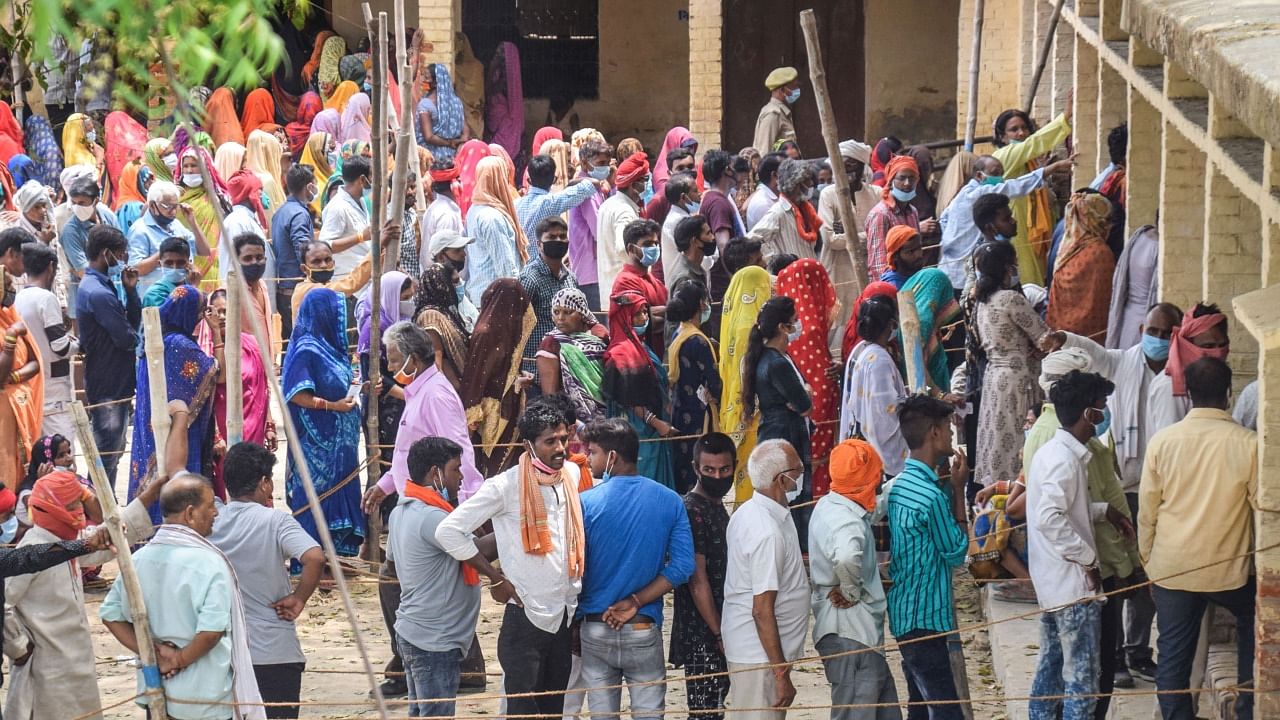
Representative image of people waiting in a polling booth.
Credit: PTI Photo
In the 2019 general election in India, the voter turnout was approximately 67.4% of the voting-age population. However, when considering the (claimed) active members of political parties, which stand at around 23.67% of the population, with the BJP having the highest proportion at 13.31% and the CPI-M the lowest at 0.07%, we find that deducting this decisive variable from the purportedly voting population leaves us with 43.73% of the population reported as indecisive. Despite being labelled indecisive, the floating voter—whose proportion has steadily increased since the middle of the 20th century—has emerged as a significant variable influencing election outcomes. Consequently, they have become the subject of numerous research endeavours.
However, we must note that we do not label them indecisive since they represent the unbiased portion of the voting population. Instead, we delve into their indecisiveness in the subsequent paragraphs. The focus of our discussion is not on the normative nature of election manifestos, nor do we aim to dictate what should or should not be included. Instead, we aim to understand why there may be significant indecisiveness in the electoral decision-making process among Indian voters.
Over the years, there has been a notable absence of scientific explanations regarding what truly influences decisive voting behaviours in a positive light. However, from a normative perspective, such behaviours should ideally be guided by assessing the incumbent’s performance over the last term, their promises for the upcoming term, and public perception. In the contemporary era, it is evident that public perception has assumed dominance, overshadowing other factors. Consequently, performances and promises are often tailored to align with public sentiment. The pressing question then arises: What are the implications of this shift regarding voter indecisiveness?
The first implication revolves around narratives. Given that the dominant strategy for winning involves capturing the maximum number of floating votes, political parties often segment the floating voter base and tailor separate communication campaigns targeted at each segment. These campaigns are built around narratives that resonate with each stratum of floating voters. In the digital age, where the electorate’s presence on social media is significant, numerous narratives are circulated. However, the inundation of narratives can sometimes overwhelm individual decision-making and leave voters needing clarification about whom to follow and whom to reject. The proliferation of misinformation, deep fakes, and the widespread influence of social media exacerbate this indecisiveness. An obvious explanation for this phenomenon is that when performances and promises take a back seat and narratives wield significant influence, voters are moulded in ways that lead to immense indecisiveness.
The second implication pertains to information inequality. Numerous studies, particularly those focused on US presidential elections, have revealed a trend where, as the election draws nearer, the proportion of floating voters who remain indecisive decreases significantly, highlighting the existence of an asymmetry in information within the hierarchy of democratic intentions for development. In
this hierarchy, leaders possess the most information, followed by followers or
members. Floating voters, however, need more access to accurate information. While shaping perceptions occurs rapidly, narratives and claims play a pivotal role in swaying floating voters towards particular sides. Consequently, although the democratic setup may witness a decrease in floating voters as the election approaches, indecisiveness remains high because the choice of sides is perception-based rather than grounded in factual information.
Another significant factor contributing to voter indecisiveness in India is the glaring disparity between the idealistic principles of democracy enshrined in political laws and the pragmatic realities of governance in different regions. This disjunction leads to divergent expectations among voters, shaped by continuous updates to their beliefs over five years. While voters typically expect basic amenities like roads or hospitals to be constructed or repaired by the government, the response often needs to be revised, typically consisting of explanations and promises for future action if given another opportunity. This dissonance between expectation and reality perpetuates voter indecisiveness as citizens grapple with the widening chasm between democratic ideals and political practice.
Voter indecisiveness carries significant systemic and humanitarian implications. It casts doubt on the election outcomes and undermines the integrity of each vote cast, introducing inconsistency into the democratic decision-making process. This poses a substantial challenge to Indian democracy, as the considerable pull of floating voters coupled with a lack of systematic evaluation of performance and promises allows temporary perceptions to sway voter decisions.
Consequently, the long-term satisfaction derived from a democratic setup is compromised, as the reliance on perception-based persuasion jeopardises the foundation of a robust and accountable democratic system.
(The writer is a PhD scholar at the Institute for Social and Economic Change, Bengaluru)